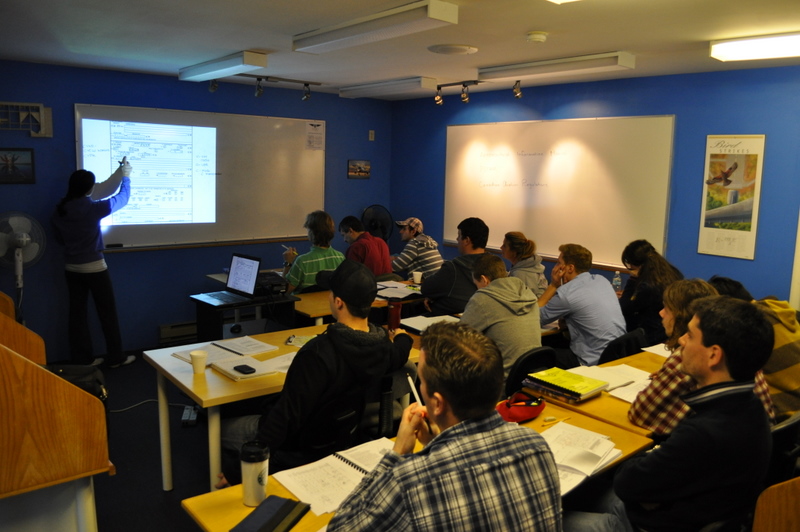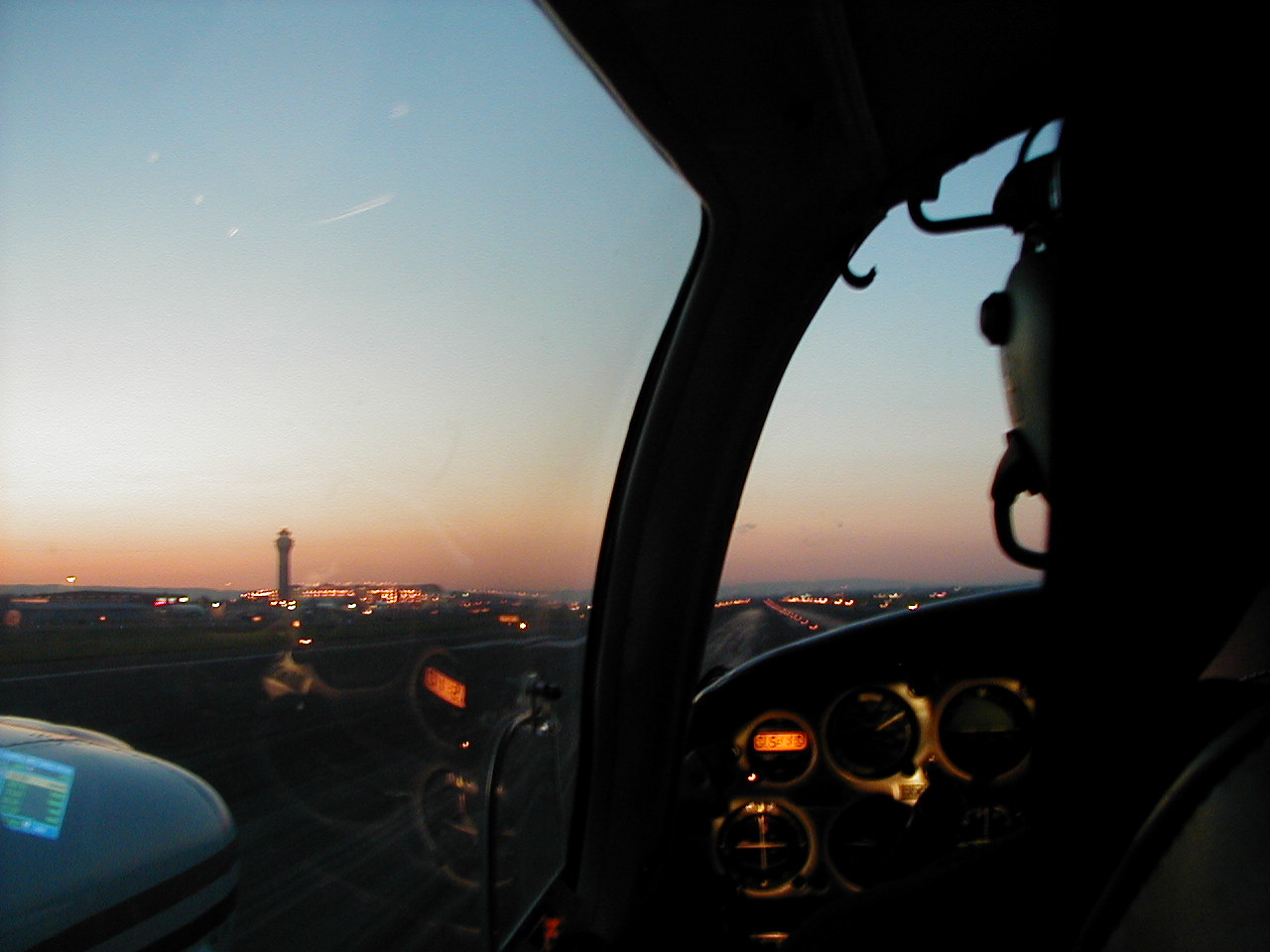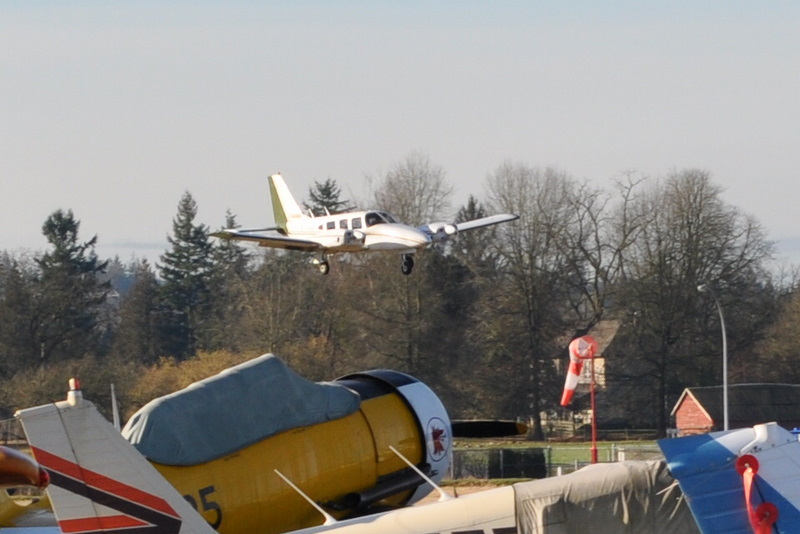LICENSING REQUIREMENTS
- LICENSING REQUIREMENTS
- Aviation Document Booklet
- Aviation Language Proficiency
- Categories and Classes
- Student Pilot Permit
- Recreational Pilot Permit
- Private Pilot Licence (day VFR)
- Night Rating
- VFR Over-the-Top Rating
- Commercial Pilot Licence (day and night VFR and VFR OTT)
- Instrument Rating
- Multi-engine Class Rating
- Seaplane Rating
- Airline Transport Pilot Licence
- Pilot Personal Logs
- Recency Requirements
- Medical Certificates
Aviation Document Booklet
Pilot authority is provided by Transport Canada through the issue of Aviation Document Booklets (ADB), which contain information on licence, permit, and rating privileges, the medical certificate, and English Language proficiency certification. The one exception is the Student Pilot Permit, which is a stand-alone document.
The ADBs are colour coded based on the authority type. Pilot Licences, including the Private Pilot Licence, Commercial Pilot Licence, and the Airline Transport Pilot Licence are blue in colour, Air Traffic Controller Licences are grey, while pilot permits, such as the Recreational Pilot Permit, are grey.
ADBs are valid for 60 months (5 years) from the date of issue, and expire on the 1st day of the 61st month.
Aviation Language Proficiency
In accordance with the standards established by the International Civil Aviation Organization (ICAO), all pilots must be assessed and provided with respect to their language proficiency rating. English is the language of aviation according to ICAO standards, and all pilots must demonstrate an acceptable level of language proficiency.
There are three language proficiency ratings: expert, operational, and below operational. An expert rating is provided to those who achieve level 6 on the language proficiency test, and this assessment provides that no further testing of the pilot is required. An operational rating is provided to those who score at level IV or five on the test, and English language proficiency must be re-tested every five years. An assessment of being below operational proficiency means that the candidate does not qualify for a Canadian pilot license or permit.
Categories and Classes
There are six categories of aircraft for which flying privileges are provided: balloon, glider, aeroplane, ultra-light aeroplane, helicopter, and gyroplane.
There are four classes of aeroplanes for which privileges are further specified: single-engine land aeroplane, single-engine sea aeroplane, multi-engine land aeroplane, and multi-engine sea aeroplane.

Student Pilot Permit
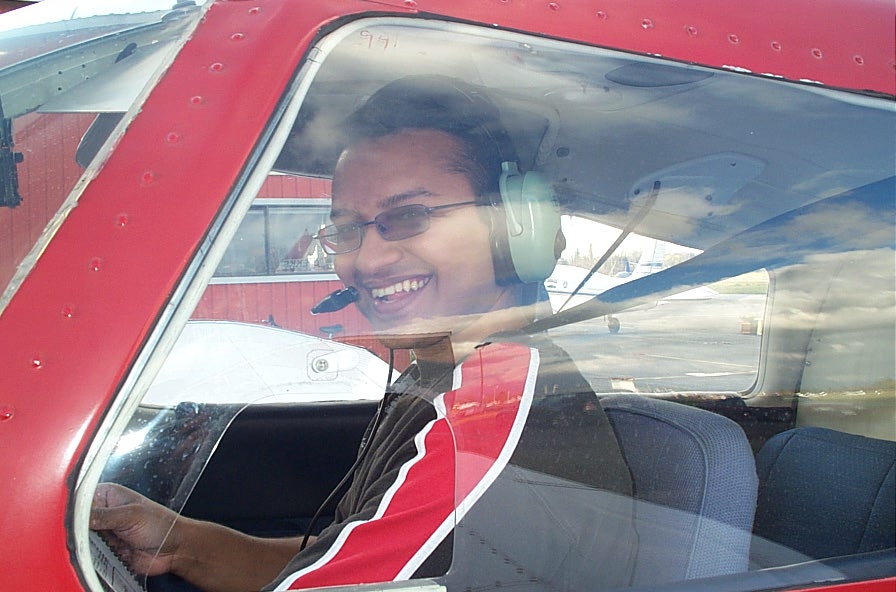
The minimum age for this permit is 14 years.
Prior to receiving a Student Pilot Permit, the holder shall have a Category 1, 3, or 4 Medical Certificate (discussed below).
Prior completion of the examination entitled the Student Pilot Permit or Private Pilot Licence for Foreign and Military Applicants, Air Regulations (“PSTAR” for short, as no one can ever remember such an exam name!) is required. The PSTAR examination is administer on behalf of Transport Canada by most certified Flight Training Units—LangleyFlyingSchool, for example, administers its own PSTAR examination. The passing grade for the PSTAR is 90% and it must be corrected to 100%. The material contained in Canadian Aviation Regulations and the material related to Medical Factors in Flight Operations, are designed to prepare Langley Flying School student for the PSTAR examination.
Once the age, medical, and PSTAR requirements are met, a student may be issued the Student Pilot Permit by an Authorized Person.1
Before a student pilot can exercise the privileges of a Student Pilot Permit and act as Pilot-in-command—i.e., before they can fly an aircraft without a Flight Instructor on board—a Flight Instructor must certify in the student’s Pilot Training Record that the candidate has reached a satisfactory standard of experience and skill to complete solo flight.
For the purpose of receiving flight training or undertaking a flight test, the holder of a Student Pilot Permit may act as Pilot-in-command of any aircraft of the category to which the permit applies, provided the following requirements are met:
- The flight is conducted in Canada during the day;
- the flight is conducted under the direction and supervision of Flight Instructor;
- passengers are not carried on board the aircraft.
Langley Flying School’s Flight Training Operations and Procedures require that a Flight Instructor must authorise in writing any student solo flight conducted by the holder of a Student Pilot Permit.
Student Pilot Permits remain valid for five years beginning on the first day of the month following the month in which the student’s medical examination occurred.
Recreational Pilot Permit

The minimum age for this permit is 16 years.
The holder of a Recreation Pilot Permit must hold a valid Category 4 Medical Certificate or higher.
Training for this permit must be conducted as per Transport Canada requirements.
The applicant must have completed a minimum of 40 hours groundschool on subjects specified by TC.
The applicant must obtain a minimum 60% on the Transport Canada examination (Air Law, Navigation, Meteorology, and Aeronautics-General Knowledge).2
The applicant must have completed a minimum of 25 hours flight training in the aircraft category (aeroplane, gyroplane, and helicopter), including no less than 15 hours dual with a flight instructor and 5 hours solo.
Of the 15 hours of dual instruction, 2 hours must be cross-country time.
Successful completion of a flight test is required.
Recreational Pilots are licensed to fly any single engine, four-seat aircraft or smaller (including ultra-light, single-engine aeroplanes) during the day in Canada.
Private Pilot Licence (day VFR)
The minimum age for Private Pilot Licence is 17 years.
The applicant must hold a valid Category 1 or 3 Medical Certificate.
Training for the licence must be conducted as per Transport Canada requirements.
The applicant must have completed a minimum of 40 hours Groundschool on subjects specified by Transport Canada.
60% on the Transport Canada examination is required (Air Law, Navigation, Meteorology, and Aeronautics-General Knowledge).3
The applicant must have completed a minimum of 45 hours flight training in the aircraft category (aeroplane, gyroplane, and helicopter), including no less than 17 hours dual (logged with a flight instructor) and 12 hours solo.
Of the 17 hours of dual instruction, 3 hours must be cross-country, and 5 hours must be instrument time (reference only to flight instruments).
Of the 12 hours solo practice, 5 hours must be a cross-country trip with a triangular flight not less than 150 nautical miles, including 2 full-stop landings.
Successful completion of a flight test is required.

Private Pilots receive a blanket aircraft type rating for “all single pilot, non-high performance single engine land aeroplanes”; however, they can fly any aeroplane provided they have received an Individual Aircraft Type Rating, which may require additional ratings, examinations, and Pilot Proficiency Checks (flight test).
The blanket aircraft type rating therefore excludes multi-crew aircraft (e.g., requiring a co-pilot), as well as high performance aircraft.
A high performance aircraft is formally defined as aircraft with a “never-exceed speed” (Vne)4 of 250 knots (KTS) indicated airspeed (KIAS) and greater, or a “stall speed in a landing configuration” (Vso)5 of 80 KIAS and greater.
Completion Requirements
Students must be timely on completing both the written examination and flight training requirements for their flight test examination. The results of written examinations are valid for only 24 months. In contrast, the results of a flight test are valid for only 12 months. To obtain the licence, the successful completion of the flight test and the written examination must be simultaneously valid—the flight test must be completed during the validity period of the written examination, or the written examination must be completed during the validity period of the flight test, whichever the candidate decides to do first.
Transport Canada charges a licensing fee, and Designated Flight Test Examiners (appointed by Transport Canada) charge a flight test fee.
Examination Administration
If a person fails a written examination, there is a waiting period. In the event of a first failure, the person must wait 14 days; with a second failure, the waiting period is 30 day; and in the case of third or subsequent failures, the person must wait 30 days plus an additional 30-day period for each failure in excess of two failures, up to a maximum of 180 days.
This waiting requirement does not apply to the PSTAR examination required for the Student Pilot Permit.
The Private Pilot and Recreational Pilot written examinations are composed of sections, and the waiting requirements do not apply if a person obtains a passing grade on the overall examination, but fails one or more sections.
Additionally, re-writing an examination only requires that you rewrite the failed sections.
Transport Canada charges an administration fee for examinations.
Night Rating
The holder of a licence endorsed with a Night Rating may exercise the privileges of the licence in Night VFR conditions.
The applicant for the rating requires 20 hours flight experience in same aircraft category.
The applicant must have completed a minimum of 10 hours night-flight experience, including no less than 5 hours dual instruction (which must include a 2-hour cross-country), and 5 hours solo flight time, which must include 10 takeoffs and landings.
The applicant must also have completed 10 hours dual instrument time.
Transport Canada requires neither a flight test nor written examination for the Night Rating.
VFR Over-the-Top Rating
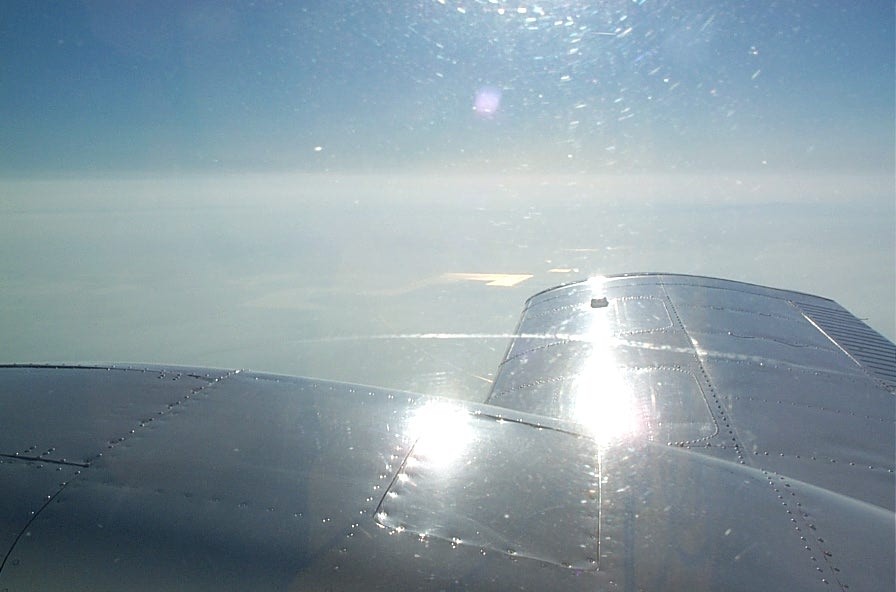
The holder of a licence endorsed with a VFR Over-the-Top (VFR OTT) Rating may exercise the privileges of the licence while flying VFR above a cloud ceiling.
This rating requires the applicant to have 20 hours flight experience in same aircraft category.
The applicant must have completed 15 hours dual instrument time.
Transport Canada requires neither a flight test nor written examination for the VFR OTT Rating.
Commercial Pilot Licence (day and night VFR and VFR OTT)
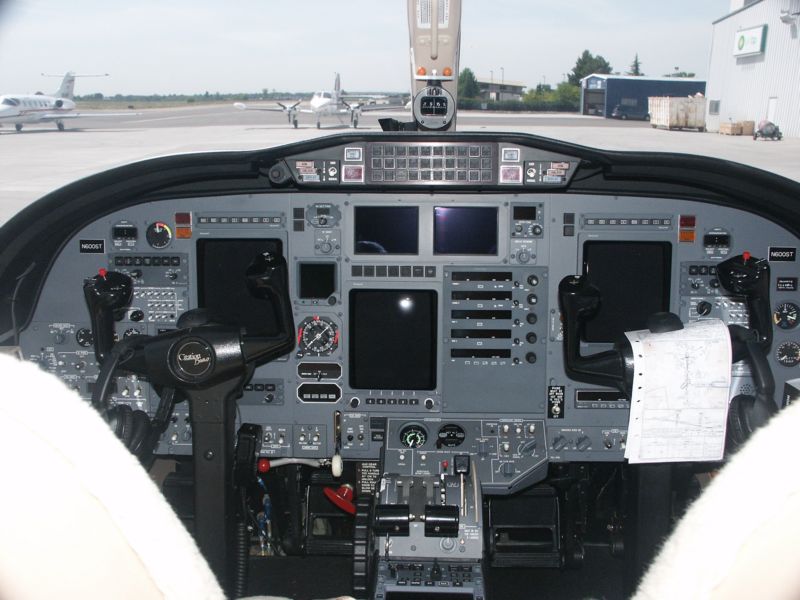
The holder of a Commercial Pilot Licence may exercise the privileges of Pilot-in-command of any aircraft engaged in a commercial air service where the aircraft minimum flight crew document requires a minimum flight crew of one pilot—i.e., an air taxi operation—or the privileges of Co-pilot of any aircraft type that is endorsed on his or her licence.
The minimum age for this licence is 18 years.
The applicant must have a valid Category 1 Medical Certificate.
Training must have been conducted as per Transport Canada requirements.
The applicant must have completed a minimum of 80 hours Groundschool on subjects specified by TC.
The applicant must obtain a minimum of 60% on the Transport Canada examination (Air Law, Navigation, Meteorology, Aeronautics-General Knowledge).
The applicant must have a minimum of 200 hours flight time experience, including 100 hours of Pilot-in-command, and 20 hours of cross-country Pilot-in-command.
The applicant must have completed a total minimum 65 hours flight training (including training for the Private Pilot Licence) in the aircraft category aeroplane, gyroplane, or helicopter), including no less than 35 dual with a flight instructor, and 30 hours solo practice (subsequent to Private Pilot Training).
Of the 35 hours of dual flight, 5 must be night (including a 2-hour night cross-country), 5 must be cross-country (of which 2 hours may be the night cross-country requirements), and 20 hours must be instrument time (reference only to flight instruments).
Of the 30 hours solo flight time emphasizing improvement in flying skills, there must be a cross-country flight to a point not less than 300 nautical miles from the point of departure, with 3 full-stop landings.
The 30 solo hours must also include 5 hours by night and completion of 10 circuits.
The licence requires the successful completion of flight test.
Instrument Rating

The holder of a licence endorsed with an Instrument Rating may exercise the privileges of the licence in IFR conditions—i.e., “instrument flight rules,” which is when the pilot can fly in cloud without visual reference to the ground.
The applicant must obtain 70% on Transport Canada examination, which assesses knowledge of Air Regulations, Instrument Flight Rules and Procedures, Meteorology, Instruments, Radio and Radar Systems, and Navigation.
The applicant must have 50 hours cross-country experience.
The applicant must have accumulated 40 hours instrument training time, including a cross-country flight in actual or simulated IFR conditions of not less than 100 nautical miles, and including instrument approaches to specified approach altitude minima at two locations.
Successful completion of a flight test is required for this rating.
Instrument Rating are issued on the basis of Groups. A Group 1 Instrument Rating applies specifies instrument privileges to fly any conventional multi-engine or single-engine aircraft, while the Group 3 Instrument Rating applies specific instrument privileges to fly only single-engine aircraft. The Group 2 Instrument Rating applies is restricted to centre-thrust multi-engine aircraft such as the Cessna 337.
Multi-engine Class Rating
The holder of a licence endorsed with a Multi-engine Rating may exercise the privileges of the licence in aircraft equipped with two or more engines.
This rating does not require the completion of a specified number of training hours.
The applicant must successfully complete a flight test.
Seaplane Rating
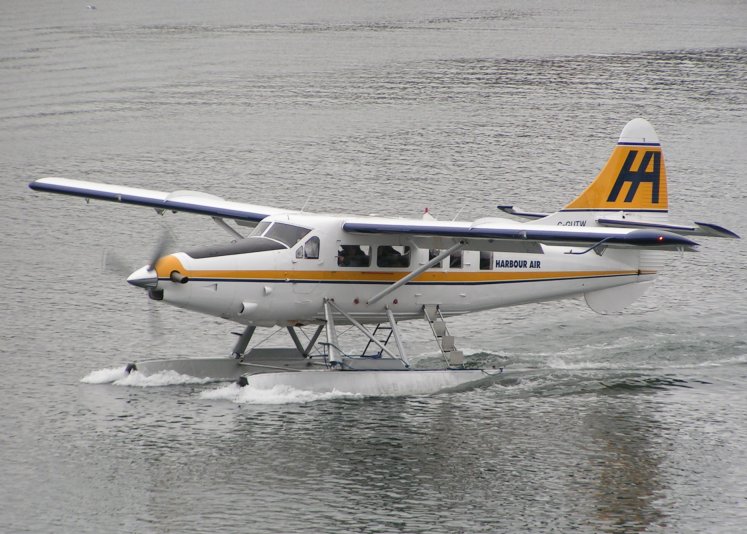
The holder of a licence endorsed with a Seaplane Rating may exercise the privileges of the licence in aircraft equipped to land and takeoff on water.
The applicant must complete a minimum number of training hours, including a minimum of 5 takeoffs and landings as the sole occupant of the aeroplane
Airline Transport Pilot Licence
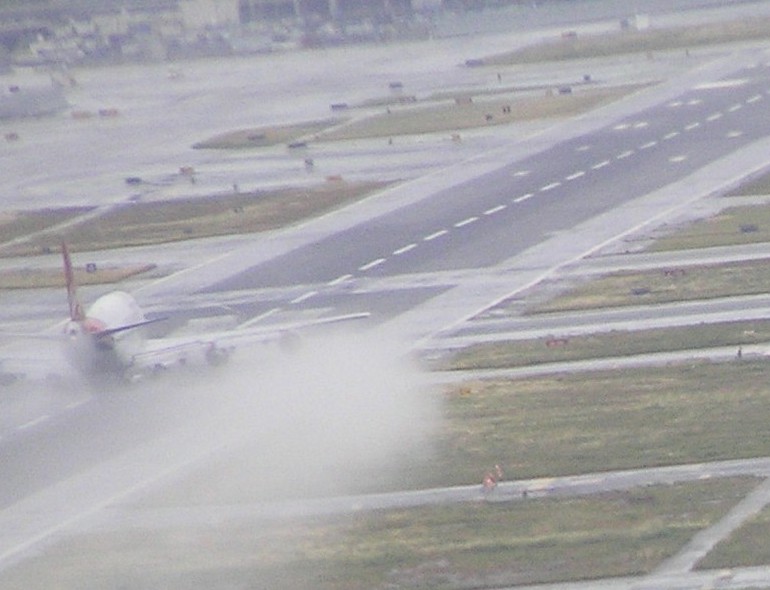
The holder of a Airline Transport Pilot Licence—the most senior licence issue by Transport Canada—may exercise the privileges of Pilot-in-command or Co-pilot of any aircraft engaged in a commercial air service where the aircraft minimum flight crew document requires a minimum flight crew of two pilots—i.e., commuter or airline aircraft.
An applicant for the Airline Transport Pilot Licence must hold a Group 1 Instrument Rating.
The following is also required:
- 70% on Transport Canada examinations—two examines must be written. The first examination (although order of writing is not important) is entitled SAMRA, concerns the subjects of Meteorology, Radio Aids to Navigation, and Flight Planning. The second examination is entitled SARON, which concerns Air Law, Aeroplane Operation and General Navigation.
- 1500 hours flight experience, of which 250 hours must be Pilot-in-command (100 of the 250 hours may be as Pilot-in-command under supervision),6 including 100 hours cross-country flight time (which must include 25 night hours).
- 100 hours night flight time as Pilot-in-command or co-pilot.
- 200 hours cross-country time as co-pilot in a two-crew aeroplane, or an additional 100 hours cross-country time as Pilot-in-command in addition to the above specified.
- 75 hours instrument flight time of which a maximum of 25 hours may be acquired in an approved instrument ground trainer (the ground trainer time cannot be applied toward the 1500 hours required).
Pilot Personal Logs
Every holder of a flight crew permit, licence, or rating must maintain a personal log for the purpose of documenting experience and recency.
For each flight, this log must contain the following information:
- the date of the flight;
- the type of aircraft and its registration mark
- the flight crew position in which the holder acts;
- the flight conditions with respect to day, night, VFR and IFR;
- in the case of aeroplanes, the place of departure and the place of arrival;
- all of the intermediate takeoffs and landings;
- the flight time.
A pilot’s personal log is audited when a licence or rating is achieved by the pilot, and for this reason it is crucial to make careful entries in the Pilot Log. When a commercial licence or airline transport licence is applied for, for example, this audit of the Pilot Log is conducted by Transport Canada personnel. In the event of commercial pilot training, it is important not to “double-dip” instrument training and night flying—that is, if a commercial student is obtaining instrument training at night, and the flight lasts .8 air time and 1.0 flight time, only a maximum of .8 can be accredited instrument time and this has to be allocated to the Pilot Log’s “day” flight time, while the remaining .2 (the difference between air and flight time) can be allocated to “night” flight time. It sounds confusing, but is required by Transport Canada.
No person shall make an entry in a personal log unless the person is the holder of the log, or has been authorised to make the entry by the holder of the log.
Recency Requirements
Five-year Recency
The holder of a flight crew permit, licence, or rating can only exercise the privileges of their permit, licence, or rating if they have acted as Pilot-in-command of an aircraft within the preceding five years.
7 In the event that they have not acted as such within this time period, privileges can only be reinstated if they undertake the following:
- successfully completes a flight review with a Flight Instructor and the Flight Instructor certifies in the holder’s personal log that the person meets the skill requirements associated with the permit, licence, or rating;8 and
- successfully completes the PSTAR examination.
Pilots also have requirements with respect to currency in landings and takeoff; this is described on Page 69.
Recurrent Training Program
The holder of a flight crew permit, licence, or rating can only exercise the privileges of their permit, licence, or rating if, within the preceding 24 months, they have completed a recurrent training program9 which may take the form of any of the following:
- completion of a flight review with a Flight Instructor;
- attendance of a safety seminar conducted by Transport Canada Aviation;
- participation in an approved recurrent training program designed to update pilot knowledge of human factors, meteorology, flight planning and navigation, and aviation regulations, rules and procedures;
- completion of the self-paced study program produced annually in the Transport Canada Aviation Safety Newsletter, a copy of which shall be the most current published by date and must be retained by the licence holder;
- completion of the requirements for the issue or renewal of a pilot permit, licence or rating, including night rating, VFR OTT, instrument rating, multi-engine rating, flight instructor rating or landplane or seaplane rating; or
- completion of the written examination for a permit, licence, or rating.
Medical Certificates
Medical Certificates are issued based on the licence or permit held:
|
Category 1 |
Required for Commercial Pilots |
|
Category 2 |
Required for Air Traffic Controllers, Flight Navigators, and Engineers. |
|
Category 3 |
Required for Private Pilots |
|
Category 4 |
Required for Recreational, Glider and Ultra-light Aeroplane Pilots, and is the minimum medical requirement for Student Pilots |
A Category 4 Medical Certificate is in fact a Civil Aviation Medical Declaration completed in the form of a medical questionnaire that must be countersigned by a family physician; Categories 1, 2, and 3 are done by Transport Canada Medical Examiners.
A pilot holding a Category 4 Medical Certificate may exercise the privileges of a permit or licence in Canadian airspace only.
The validity period of the Medical Certificate is based on the type of licence privileges exercised.10 The Medical Certificates for Private Pilots and Recreational Pilots are valid for 60 months (5 years) under the age of 40 years, but only 24 months if 40 years old or older.
The medical validity period for the holder of a Student Pilot Permit is 30 months (5 years) irrespective of age.
With regard to the validity period of a Medical Certificate for a Commercial Pilot Licences, Multi-crew Pilot Licences, or Airline Transport Pilot Licences, when acting as a flight crew member for hire or reward, is 12 months.
Validity Period Determination
An expired Medical Certificate invalidates licensing privileges, beginning on the first day of the month following the month in which re-validation was required.
If a Medical Certificate renewal examination is completed with 90 days before the end of the validity period, the validity period for the renewed certificate is calculated as if the renewal examination where conducted in the final month of the original validity period—i.e., a renewal examination can be done 90 days early without penalty.11
The end of the validity period of a medical certificate that is renewed in accordance with subsection (1.1) is calculated from
- the day on which the preceding validity period ends if the medical examination for the renewal of the certificate is conducted within 90 days before the end of that validity period; or
- the first day of the month following the day on which the medical examination for the renewal of the certificate is conducted if the examination is conducted more than 90 days before the end of the preceding validity period.
The validity period of a Medical Certificate can be shortened by Transport Canada in those cases where such a recommendation is made by a physician. Similarly, Transport Canada extends the validity period of a Medical Certificate in special cases.
Pilots flying with Category 4 Medical Certificate shall complete the renewal form 60 days before the expiry date of their Medical Certificate.
The Category 1 certificate requires an electrocardiogram (ECG) for the initial medical, and every two years between the ages of 30 and 40 years; after the age of 40, the ECG is required every year. The Category 1 certificate also requires a hearing test for the initial medical, as well as the first medical examination after the age 55. The Category 3 certificate requires an ECG every 5 years after the age of 40. Category 4 certificates simply require a Medical Declaration unless clinically indicated otherwise.
Upon expiration of Medical Certificate, Licence privileges are suspended until a medical examination is again undertaken; privileges expire at midnight on the final day of the month in which the medical was required; in the event of a Category 1 Certificate expiring, commercial flying privileges are rolled back to private flying privileges for an additional 12 or 6 months, depending on age.
Pregnant female pilots may fly up to and including their 30th week provided the pregnancy is without complications; after the 30th week, pilots are considered temporarily unfit in view of the possibility of pre-term delivery. Medical fitness must be re-certified after delivery.
References
1 An Authorised Person is on staff at Langley Flying School.
2 This examination is written via computer at Langley Flying School.
3 This examination is written via computer at Langley Flying School.
4 Vne is the fastest that an aircraft should be permitted to fly, as determined by the aircraft’s manufacturer during the type certification process. Vne is indicated on the airspeed indicated by a red radial line, alerting the pilot to this limitation. Above Vne, an aircraft will encounter structural failure.
5 Vso is the “stalling speed” of an aircraft in its landing configuration—e.g., the gear and flaps extended. The aircraft’s manufacturer has determined—again during the type certification process—that speeds below Vso are too slow for the wings to properly support lift. Vso is also indicated on the airspeed indicator, in this case by the bottom of a white arch that appears at the lower end of the speed scale.
6 Canadian Aviation Regulation (CAR) 421.11. A complete electronic version of the CARs is available on Transport Canada’s website.
7 CAR 401.05
8 CAR 421.05.
9 CAR 421.05.
10 CAR 404.04.
11 CAR 404.04 (7)
.jpg)
